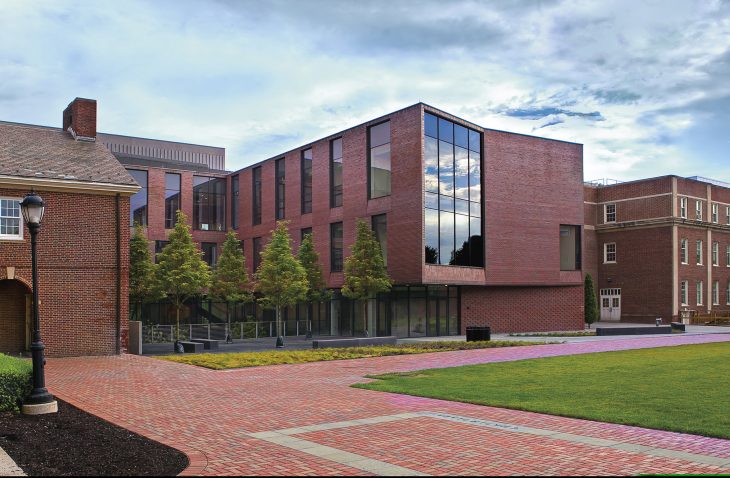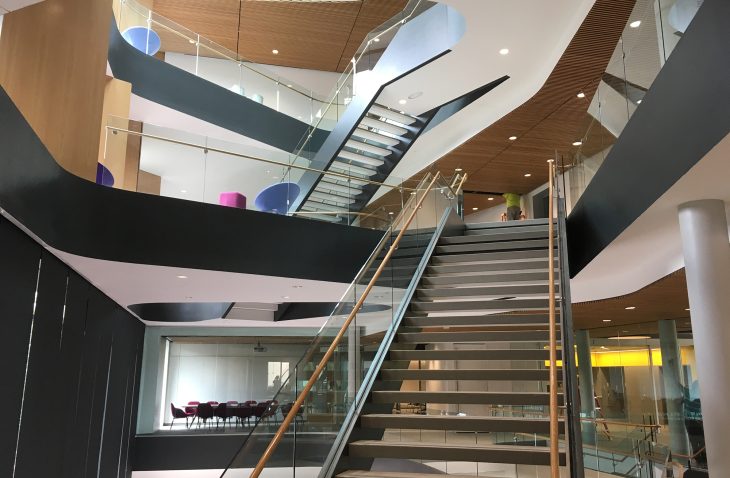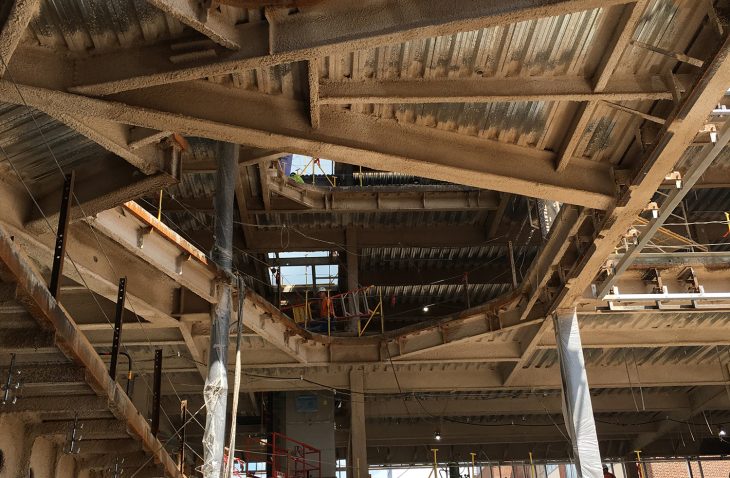LEED Platinum Certified Academic Science and Laboratory Building
Rockwell Integrated Sciences Center (RISC) is a five-story, 104,000-sf state-of-the-art academic science and laboratory building housing Lafayette’s biology, computer science and environmental science departments, as well as the Dyer Center for Innovation and Entrepreneurship. The RISC features flexible spaces that can adapt to new technology, varying group sizes, and diverse research experiences, and bring together different engineering and science departments in a collaborative and creative environment.
Situated on the north side of the campus quad between and connecting to two existing buildings and set into a hillside, this building placement required a unique structural configuration. The building terraces down the steep slope with the main entrance into the third floor with two floors and a basement below and three floors visible from the courtyard.
Framed mostly in steel, Rockwell is shaped like a letter L in plan, consisting of a north-south wing that contains shared classrooms and computer science facilities, and a larger east-west wing that houses the science laboratories, vivarium and custom roof greenhouse. At the point at which the two wings meet, a four-story atrium features a series of overlapping signature staircases and student study spaces beneath an organically shaped skylight; similarly formed openings in the floors will create sight lines and connections up and down the atrium floors.
The structure is typically a concrete slab on metal deck floor system with a steel superstructure. However, a 16-inch thick cast-in-place concrete third floor slab, located only at the southern end of the building, allowed for the extension of the courtyard on top of the new building. The southern end of the fourth and fifth levels hang from cantilevers at the roof level and extend out over the courtyard to keep the ceiling at the third-floor main entrance as high as possible.
The steel frame construction was designed for flexibility for future changes in education and classroom practices. A two-level, 28-foot-tall Vierendeel truss, hidden behind the brick and wooden paneling of the atrium, supports the atrium’s signature stairs and floor and provides a column-free zone for the extensive glazing at the lobby’s connection to a second-floor exterior plaza. Floor beams at the atrium were designed to control vibrations in the large, open atrium space. The atrium stairs connect to cantilevered beams in the floor that connect to beams and girders and then columns or the Vierendeel truss — the cumulative deflections of which were closely controlled for vibration. The atrium stairs feature custom-designed double-plate stringers with fully detailed connections for field erection adjustability. The plate stringers create a slot for glass railings that continue from the stairs and around the atrium floor openings.
The building was also strategically designed with vibration control to prevent hindrances on any research in the lab spaces. Vibration “maps” were developed to help the college locate and upgrade sensitive equipment within the spaces and relocate the equipment during future renovations.











